#JPL-Caltech
Explore tagged Tumblr posts
Photo

nasa: A stone cold look at Saturn 🗿
The giant planet gives us a look into its moody disposition. The Cassini spacecraft captured this image on Jan. 30, 2007, from a distance of 700,000 miles (1.1 million kilometers). As Saturn’s atmosphere rages with thunderous and hurricane-like storms, its majestic rings spin a tale of ancient collisions and cataclysms. A joint endeavor of NASA, @europeanspaceagency, and @agenziaspazialeitaliana, Cassini was a sophisticated robotic spacecraft sent to study Saturn and its complex system of rings and moons over the course of a decade. Lessons we took from Cassini helped in the planning of our #EuropaClipper mission, which is on its way to Jupiter and expected to arrive in April 2030. Image description: A black-and-white image of Saturn taken from a lower angle. The rings of Saturn frame the upper right portion of the planet in various widths. Details of stripes and swirls from storms can be seen along the face of the planet. The left side of the planet is encompassed in a shadow. Credit: NASA/JPL-Caltech/Space Science Institute #NASA #Space #Saturn #Rings #Storms #Atmosphere #Moody #Planet #SolarSystem #BlackAndWhite
#nasa#esa#asi#space#saturn#cassini#jpl#jpl-caltech#cal tech#space science institute#planet#rings#storm#atmosphere#solar system#astronomy#space exploration#2007#january 30
55 notes
·
View notes
Text

Curiosity Views Gediz Vallis !
NASA’s Curiosity Mars rover used its Mastcam to capture this mosaic of Gediz Vallis, the 3,646th Martian day, or sol, of the mission.
In the center of the valley in this image is a pile of boulders and debris that may have been swept there by flowing water billions of years ago.
Credits: NASA/JPL-Caltech/MSSS
#art#cosmos#cosmic#universe#blast#space#wallpaper#photography#mars#gediz vallis#nasa#curiosity#mastcam#mosaic#sol#JPL-caltech#MSSS
25 notes
·
View notes
Text
Insane view of the great Andromeda Galaxy — home to one trillion stars. 🌌
📹: FarLife1 via X
—
The Andromeda Galaxy is a barred spiral galaxy and is the nearest major galaxy to the Milky Way.
It was originally named the Andromeda Nebula and is cataloged as Messier 31, M31, and NGC 224.
Andromeda has a D25 isophotal diameter of about 46.56 kiloparsecs (152,000 light-years) and is approximately 765 kpc (2.5 million light-years) from Earth.
The galaxy's name stems from the area of Earth's sky in which it appears, the constellation of Andromeda, which itself is named after the princess who was the wife of Perseus in Greek mythology.
43 notes
·
View notes
Text
Eclipses para estudiar exoplanetas alrededor de sus estrellas anfitrionas
Una nueva y emocionante investigación realizada por astrónomos a descubierto un cielo lleno de estrellas eclipsadas por sus exoplanetas gigantes gaseosos. ¿Ese cielo nocturno estrellado? Está lleno de eclipses. @NASA_ Nuestra estrella, el Sol, en ocasiones une fuerzas con la Luna para ofrecernos a los terrícolas un espectacular eclipse solar, como el que será visible en partes de Estados…
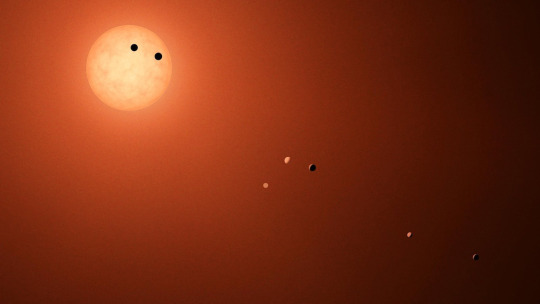
View On WordPress
#Eclipses#Exoplanetas#Exoplanetas gigantes gaseosos#Exoplanetas similares a la Tierra#JPL-Caltech#NASA#telescopio espacial james webb#Tess#Universo
0 notes
Text

🔴 Mars Perseverance Sol 1454: Right Mastcam-Z Camera / enhanced
March 23, 2025 (Sol 1454) / 10:15:34 local solar time
source image: Mars_Perseverance_ZR0_1454_0796010287_081EBY_N0710000ZCAM09515_1100LMJ
Image Credit: NASA / JPL - Caltech / ASU / Jackie Branc
#Mars#mars perseverance#perseverance#NASA#JPL#nasa jpl#Caltech#red planet#mars rover#solar system#elloon#jackie branc photographer
117 notes
·
View notes
Text
The celestial object of the day is Phobos!
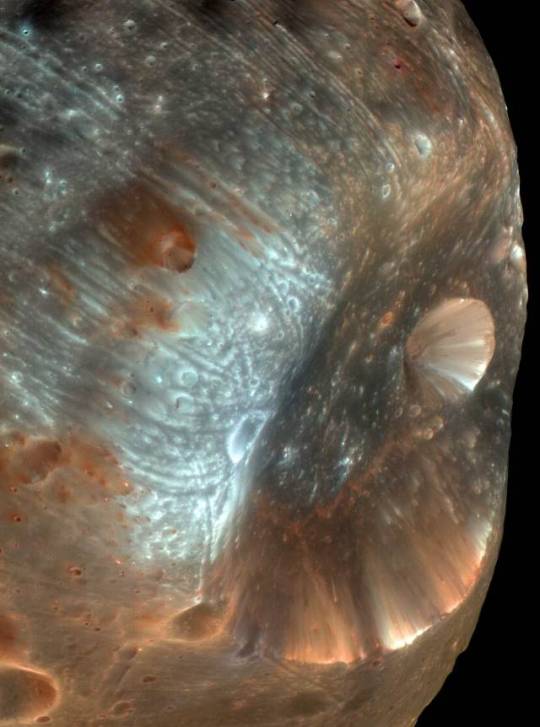
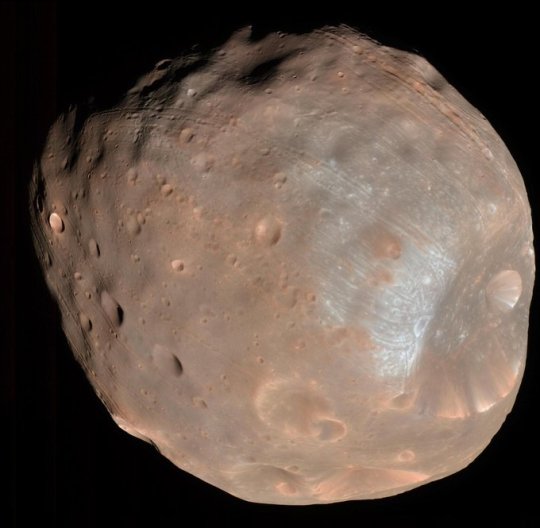
It's Mars's largest moon with 21 km (13 mi), it orbits Mars at only 6,000 km (3,700 mi) and it gets closer by 1.8 meters every year, at that rate is expected to collide with Mars or form a planetary ring in about 30-50 million years!
#image credit: NASA/JPL-Caltech/University of Arizona#The first picture is a photo of the Stickney crater#And is named after Chloe Angeline Stickney Hall who helped discover both Martian moons!#She was so cool kinda sad that her work wasn't properly paid only because she was a woman :(#sorry for the rant#I just really like astronomy history#Ok now to the actual tags#astrophotography#astronomy#nasa photos#nasa#space photography#outer space#space exploration#space#celestial object of the day#mars#phobos#moons
148 notes
·
View notes
Photo

SOL - 4394
Visualization: Vladimir Jankijevic
Credit: Courtesy NASA/JPL-Caltech - https://mars.jpl.nasa.gov
#Mars#Red planet#Space#Planet#Science#Astronomy#Geology#Caltech#JPL#NASA#msl#MAHLI#Curiosity#Rover#3D#Animation#Vladimir Jankijevic
8 notes
·
View notes
Text

Soul Nebula
(Image credit: NASA/JPL-Caltech/UCLA)
78 notes
·
View notes
Text
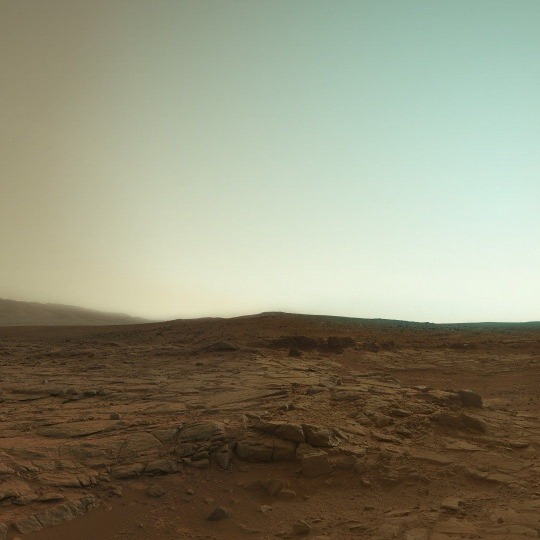
Mars
Credit: NASA/JPL-Caltech
6 notes
·
View notes
Text
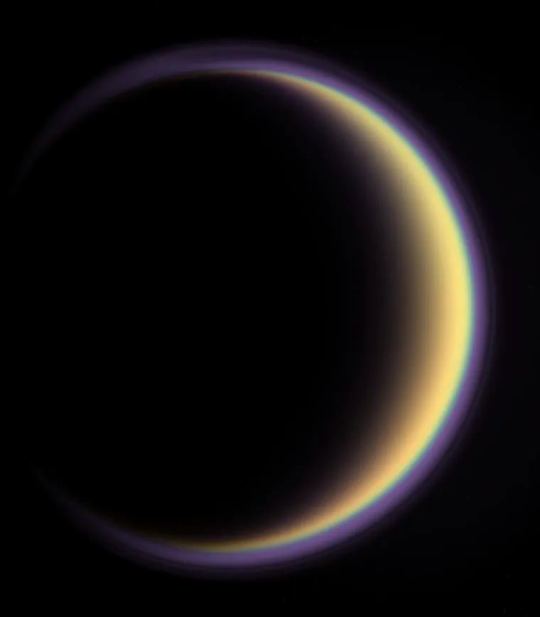
NASA/JPL-Caltech/Space Science Institute
Saturn's moon Titan shows off its atmosphere in this image captured by Cassini, as the spacecraft passed by at a distance of 900,000 miles (1.4 million km). Titan is unique among moons in our solar system, being the only moon with a thick atmosphere, which is comprised mainly of nitrogen, small amounts of methane, and trace amounts of carbon-rich compounds which rain down on Titan's surface. Titan is one of the most promising places in our solar system to look for life, with what is suspected to be a large ocean of liquid water hidden beneath its surface. Life on Titan would be very different than on Earth, though, with rivers and lakes of liquid methane strewn across its surface, an atmospheric pressure 60 times that of Earth, and a surface temperature of -290 degrees Fahrenheit or -179 degrees Celsius. Image description: The Cassini spacecraft captures the night side of Saturn's largest moon and sees sunlight scattering through Titan's atmosphere, forming purple and gray rings. Titan appears primarily black, with a sliver of yellow highlighted against its atmosphere and the blackness of space.
19 notes
·
View notes
Text

"Hand of God"
Can you see the shape of a hand in this new X-ray image?
The hand might look like an X-ray from the doctor's office, but it is actually a cloud of material ejected from a star that exploded.
NASA's Nuclear Spectroscopic Telescope Array, or NuSTAR, has imaged the structure in high-energy X-rays for the first time, shown in blue.
Image credit: NASA/JPL-Caltech/McGill
#art#cosmos#cosmic#universe#blast#space#photography#god#hand#x-ray#nasa#cloud#NST#NuSATR#hight energy#pulsar#nebula#chandra#JPL-caltech#McGill
89 notes
·
View notes
Text
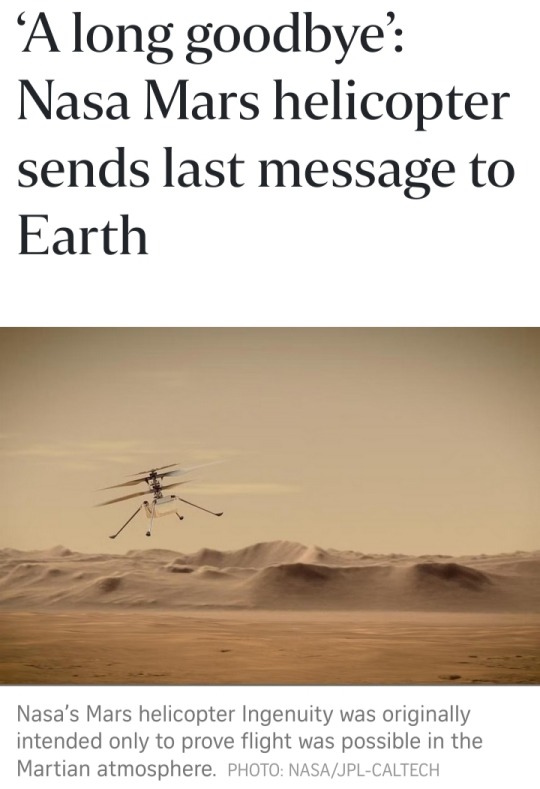
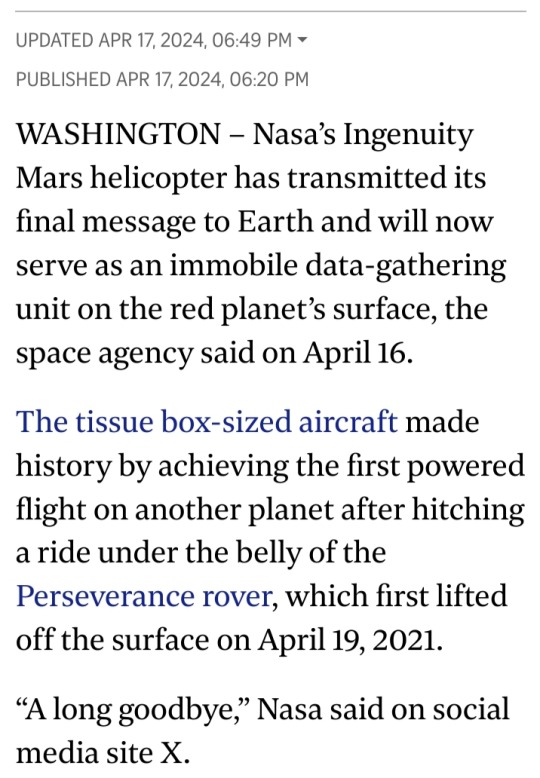

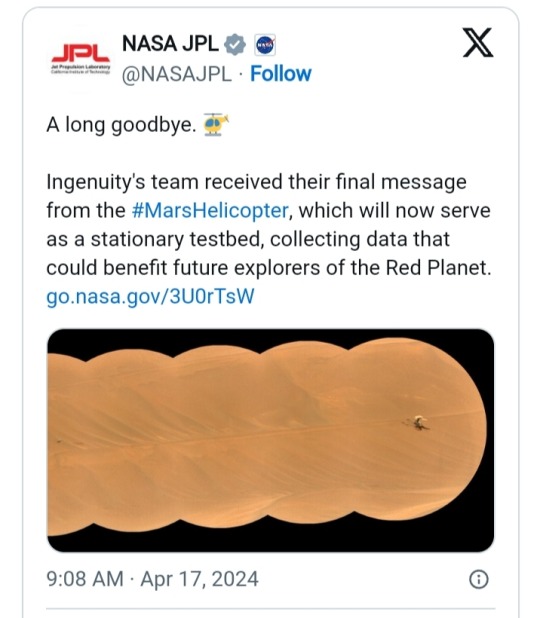

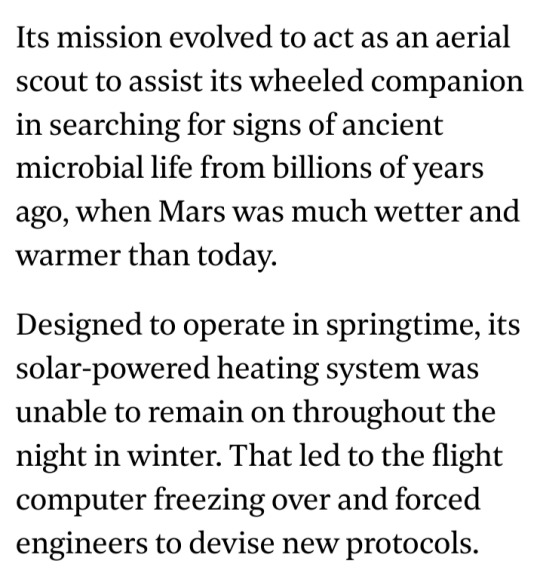
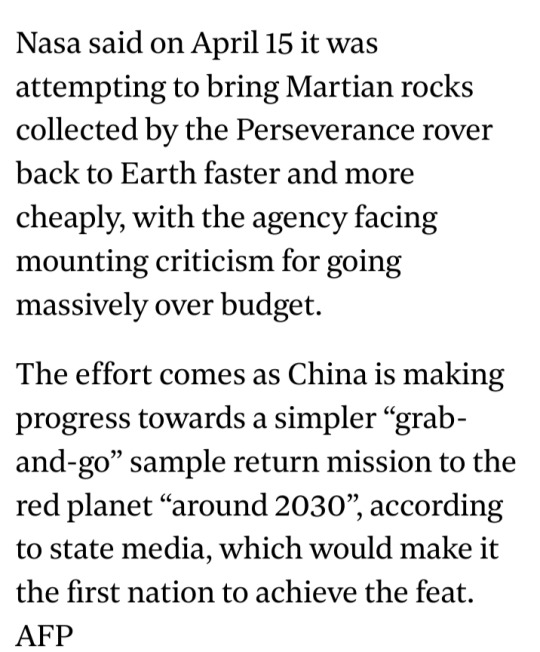
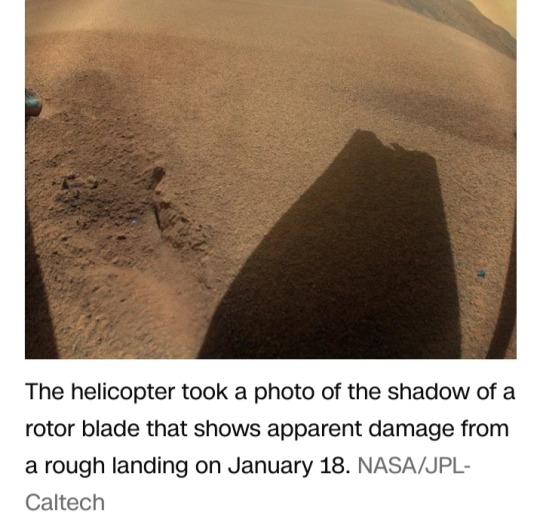

#Ingenuity#NASA#Mars#Earth#Perseverance#Mars Helicopter#stationary testbed#Martian rocks#JPL-CALTECH#red planet#sand ripples#space flight#long goodbye
1 note
·
View note
Text
Los Mavericks del INGENUITY: cómo la NASA amplió la misión del primer helicóptero a Marte
El 18 de febrero de 2021, el pequeño helicóptero Ingenuity de la NASA despegó de la superficie de Marte, haciendo historia como la primera aeronave en volar en otro planeta. La misión original era simple: realizar cinco vuelos de prueba para demostrar la viabilidad del vuelo en Marte. Pero el Ingenuity superó todas las expectativas, completando 19 vuelos en total y acumulando más de 2,8…

View On WordPress
#astrobiología#Blog divulgación#ciencia y tecnología#Evento#Ingenuity Mars Helicopter#JPL-Caltech#NASA#periodismo#personajes
0 notes
Text
,Procedente de la constelación de Sagitario, el cometa interestelar ha sido bautizado oficialmente como 3I/ATLAS. Actualmente se encuentra a unos 670 millones de kilómetros de distancia.
#acercamiento en octubre#análisis orbital#cometa 3I/ATLAS#cometa interestelar#cometas en el sistema solar#constelación de Sagitario#DEFENSA PLANETARIA#descubrimiento 2025#JPL Caltech#NASA ciencia#objeto interestelar#observaciones previas#sistema solar#telescopio ATLAS#trayectoria hiperbólica
1 note
·
View note
Photo

SOL - 4456
Visualization: Vladimir Jankijevic
Credit: Courtesy NASA/JPL-Caltech - https://mars.jpl.nasa.gov
#Mars#Red planet#Space#Planet#Science#Astronomy#Geology#Caltech#JPL#NASA#msl#MAHLI#Curiosity#Rover#3D#Animation#Vladimir Jankijevic
5 notes
·
View notes
Text
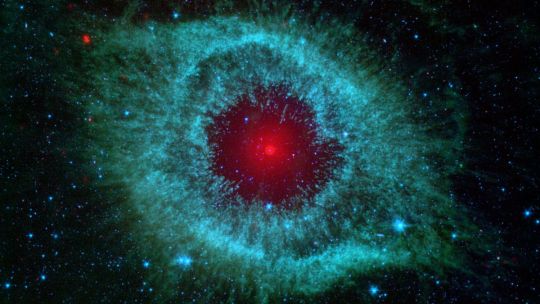
Helix Nebula
(Image credit: NASA/JPL-Caltech/Univ.of Ariz.)
29 notes
·
View notes